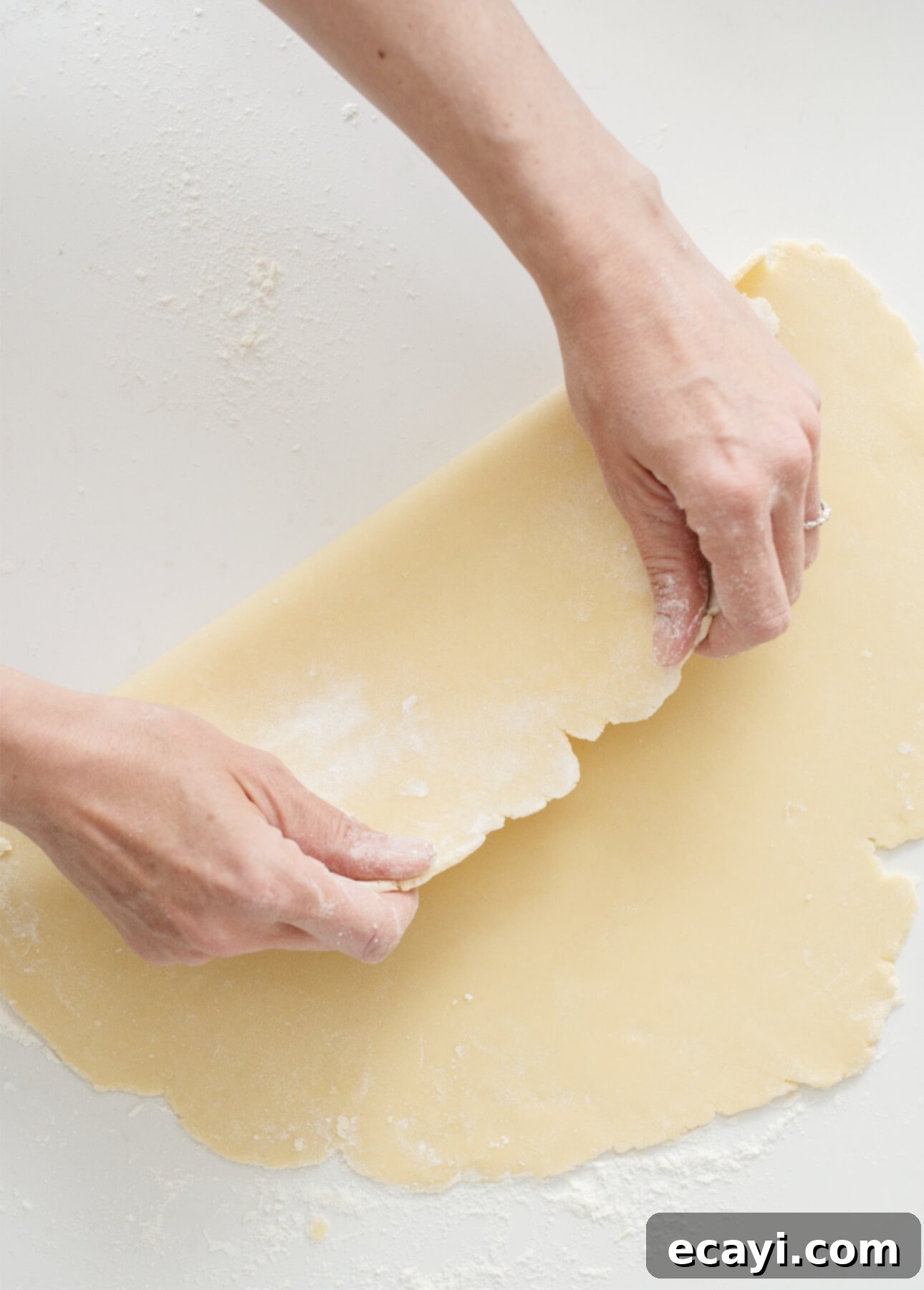Foolproof Food Processor Shortcrust Pastry: Master Flaky Pie Crusts in Minutes
This comprehensive guide reveals the secret to crafting perfect, flaky shortcrust pastry effortlessly using your food processor. Discover variations for sweet, savory, and whole-wheat applications, ensuring delightful results every time.
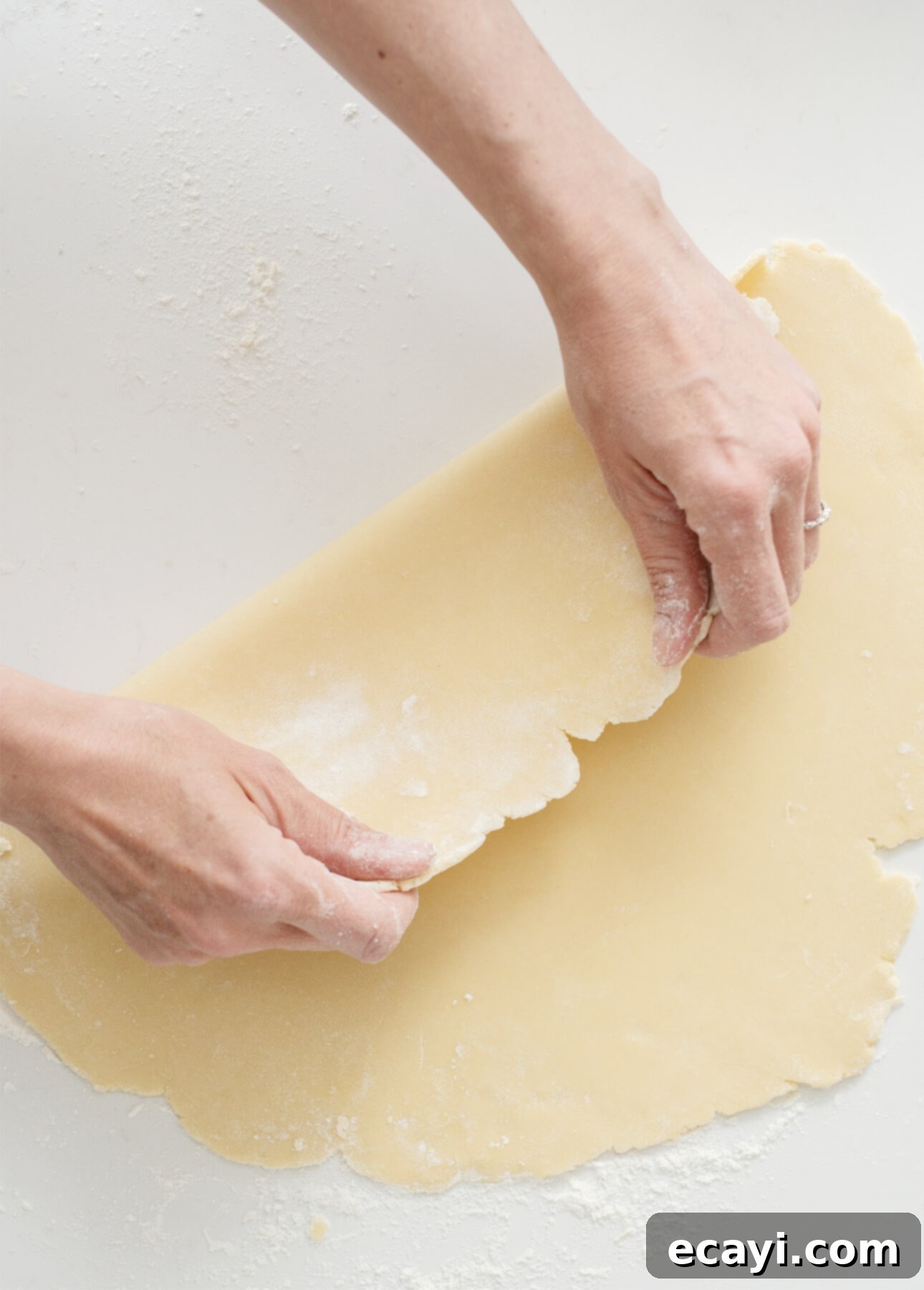
This post contains affiliate links. Full disclosure information can be found at the bottom of this article.
For many years, the thought of making homemade pie crusts from scratch filled me with apprehension. The entire process seemed designed to frustrate: my attempts often resulted in dough that was either too dry or excessively wet. Cracks would appear inevitably as I tried to roll it out, or worse, during baking. The final product consistently lacked the coveted flakiness and buttery richness I craved, often turning out dry and flavorless, regardless of the butter quantity used.
A significant part of this struggle stemmed from inexperience. I had never truly grasped the nuances of making shortcrust pastry, leaving me unsure of what signs to look for or how to correct common issues. Despite trying countless recipes – all reiterating the same fundamental advice (don’t over-process the butter, avoid overworking the dough, allow it to rest) – mastery seemed perpetually out of reach. I would have gladly purchased pre-made pie dough, but finding an authentic 100% butter pastry where I live proved impossible. Consequently, for a considerable period, I simply avoided making pies altogether. A true culinary tragedy, indeed!
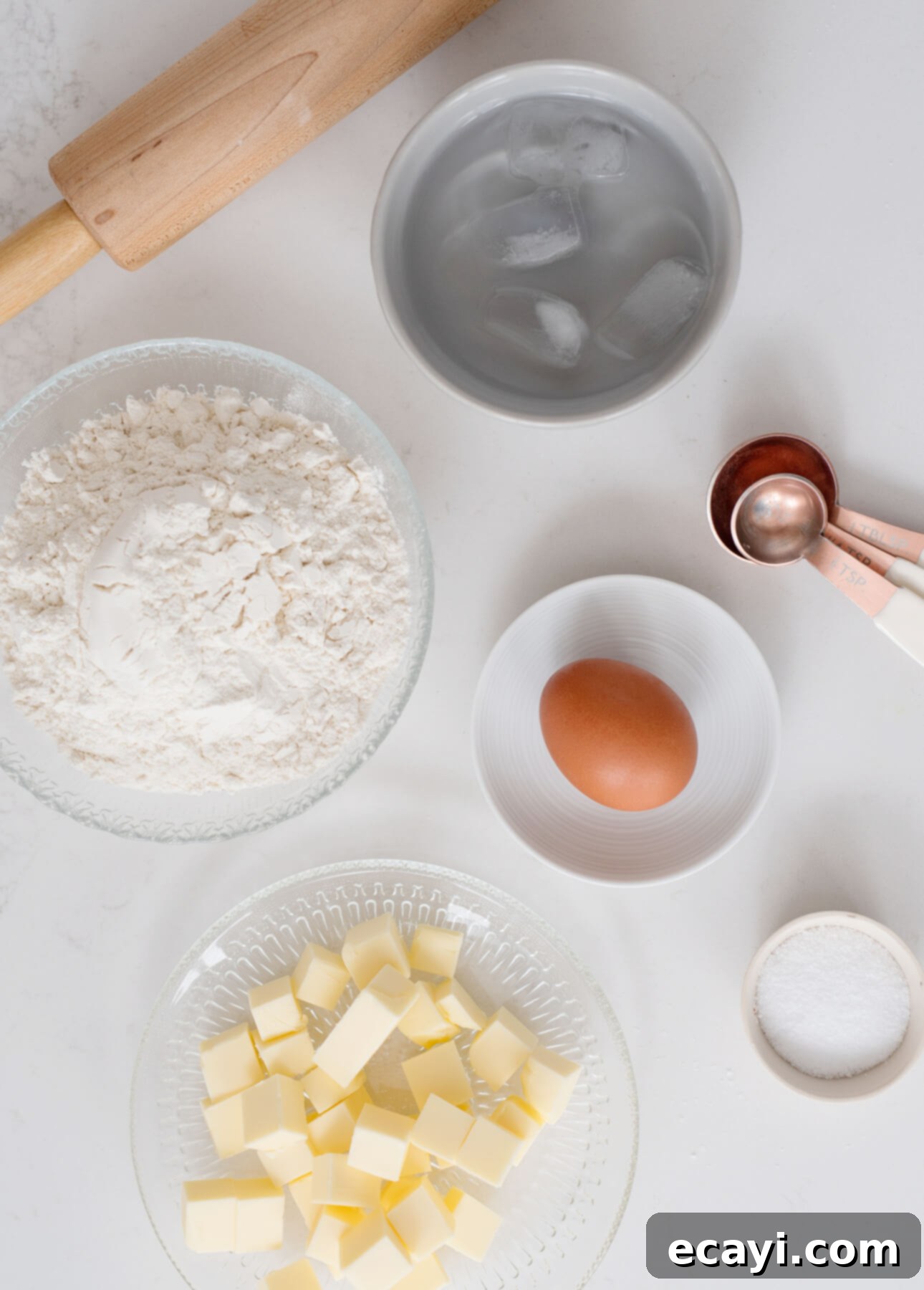
Then, a few years ago, I made a firm decision: it was time to conquer this culinary challenge once and for all. If I had managed to master notoriously finicky creations like French macarons and delicate éclairs, surely I could tackle something as seemingly humble as pie dough, right? I delved back into my trusted reference cookbooks, meticulously applying myself to the task. I took detailed notes on what techniques yielded the best results for me and painstakingly refined my recipe until it became a precise science. Now, I can confidently prepare it almost instinctively, and this particular recipe has never once failed me. Not ever.
Understanding Shortcrust Pastry: The Foundation of Perfect Pies
Before diving into the method, let’s establish a clear understanding: what exactly is shortcrust pastry? While various doughs can be used for pies and tarts, shortcrust pastry – often referred to as short pastry or pâte brisée in French cuisine – stands out as arguably the most versatile and beloved option. Its inherent flexibility makes it suitable for an extensive range of culinary applications, from rustic, savory quiches and meat pies to elegant, sweet fruit tarts and galettes. It’s a beautifully pliable dough that can be effortlessly rolled out to line pie plates, decoratively fluted to create appealing edges, folded artistically over fillings for free-form galettes, or precisely cut and woven into intricate lattice patterns.
Traditional basic pie dough typically follows an approximate 3:2:1 ratio of flour, butter, and water. However, shortcrust pastry distinguishes itself by often incorporating an egg. The addition of an egg slightly adjusts this classic ratio, but more importantly, it significantly enhances the dough’s suppleness, making it considerably easier to handle and roll without tearing. A standard shortcrust pastry typically features a flour-to-butter ratio closer to 2:1. During my own recipe development and tweaking, I discovered that I could achieve that ideal balance of workability and rich, buttery flavor with just a slightly reduced amount of butter. While there would be absolutely no harm in adding an extra 1/4 cup (57 g) of butter to this recipe if you desire an even richer crust, I highly recommend starting with the quantities provided below. This will allow you to experience firsthand how easily this pastry comes together and to truly get a feel for its perfect texture. From there, you can certainly adjust to your personal preference.
Many classic pie crust recipes advocate for incorporating butter in larger pieces, often described as “pea-sized” or even larger, believing this technique yields the flakiest pastry. However, in my extensive experience, this approach often results in a dough that is more delicate, prone to stickiness, and generally more challenging to work with. My preferred method involves blending the butter into the flour until the mixture achieves a texture akin to coarse breadcrumbs. This technique creates a sturdier, more resilient dough that remains incredibly flaky while offering superior structural integrity. This means it holds up exceptionally well to a diverse array of fillings, including those with high moisture content like juicy fruit preparations, preventing sogginess and maintaining its crispness.
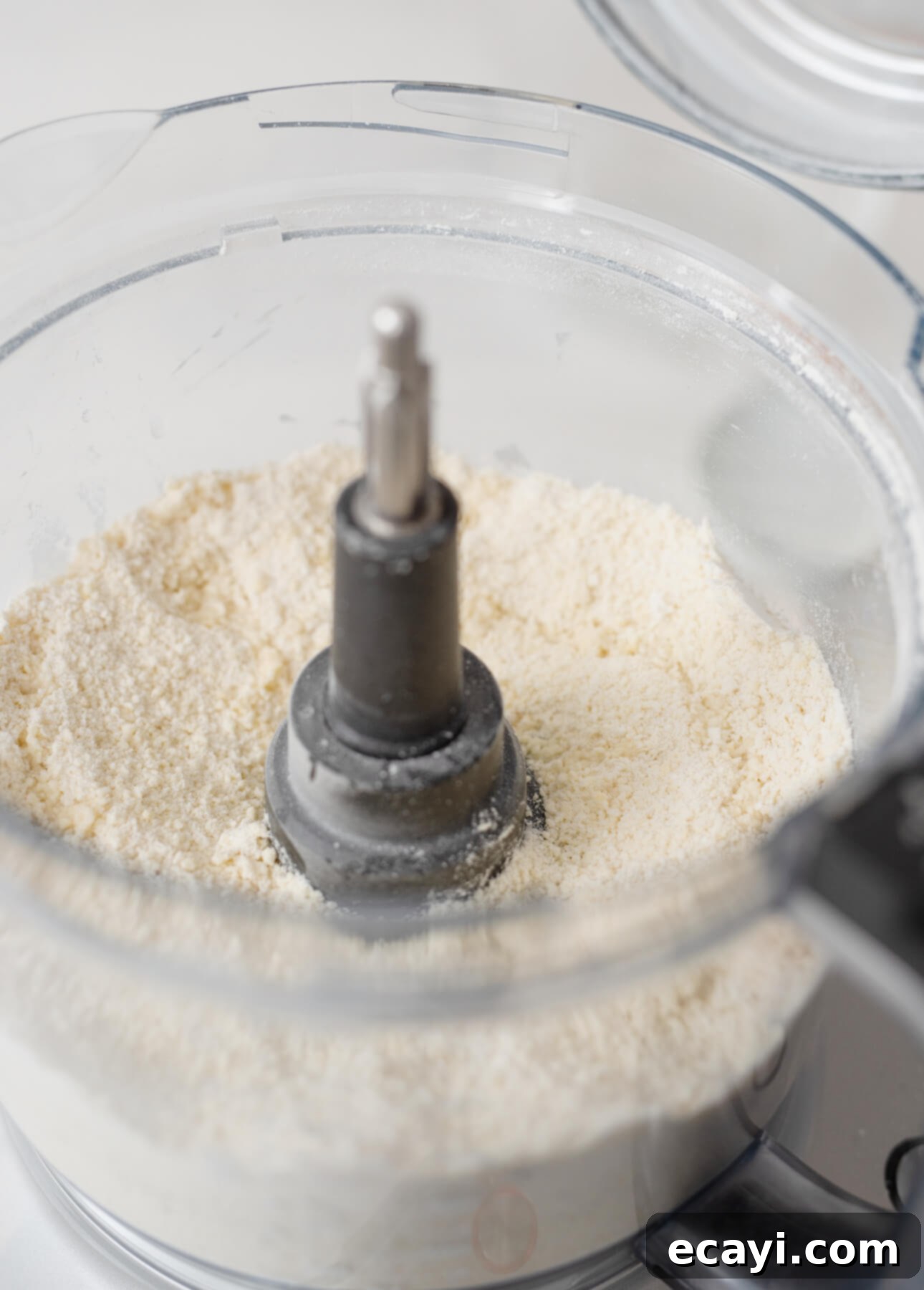
Why the Food Processor is Your Pie Pastry Game Changer
This ingenious food processor method for crafting shortcrust pastry is truly ideal for a wide range of bakers and situations. It’s particularly perfect if you identify as:
- A pie-crust novice, hesitant about traditional methods (just like I once was).
- Someone who values efficiency and convenience, often dubbed “lazy” in the best possible way (like me!).
- Frequently in a rush and need a quick, reliable solution (a common state for me).
A food processor doesn’t just simplify the shortcrust-making process; it allows you to exert precise control, guaranteeing consistent, impeccable results every single time. It dramatically cuts down on the time required to prepare homemade pie dough, transforming what was once a laborious task into a swift culinary delight. My meticulously developed recipe ensures you can create perfect shortcrust pastry in under a minute of actual processing time. Yes, really! I have precisely timed each stage, providing exact durations in seconds, making it virtually impossible to go wrong. This recipe is genuinely foolproof: I now regularly make this shortcrust pastry with my son, allowing him to count the seconds between steps, and it consistently works flawlessly, embodying simplicity and reliability.
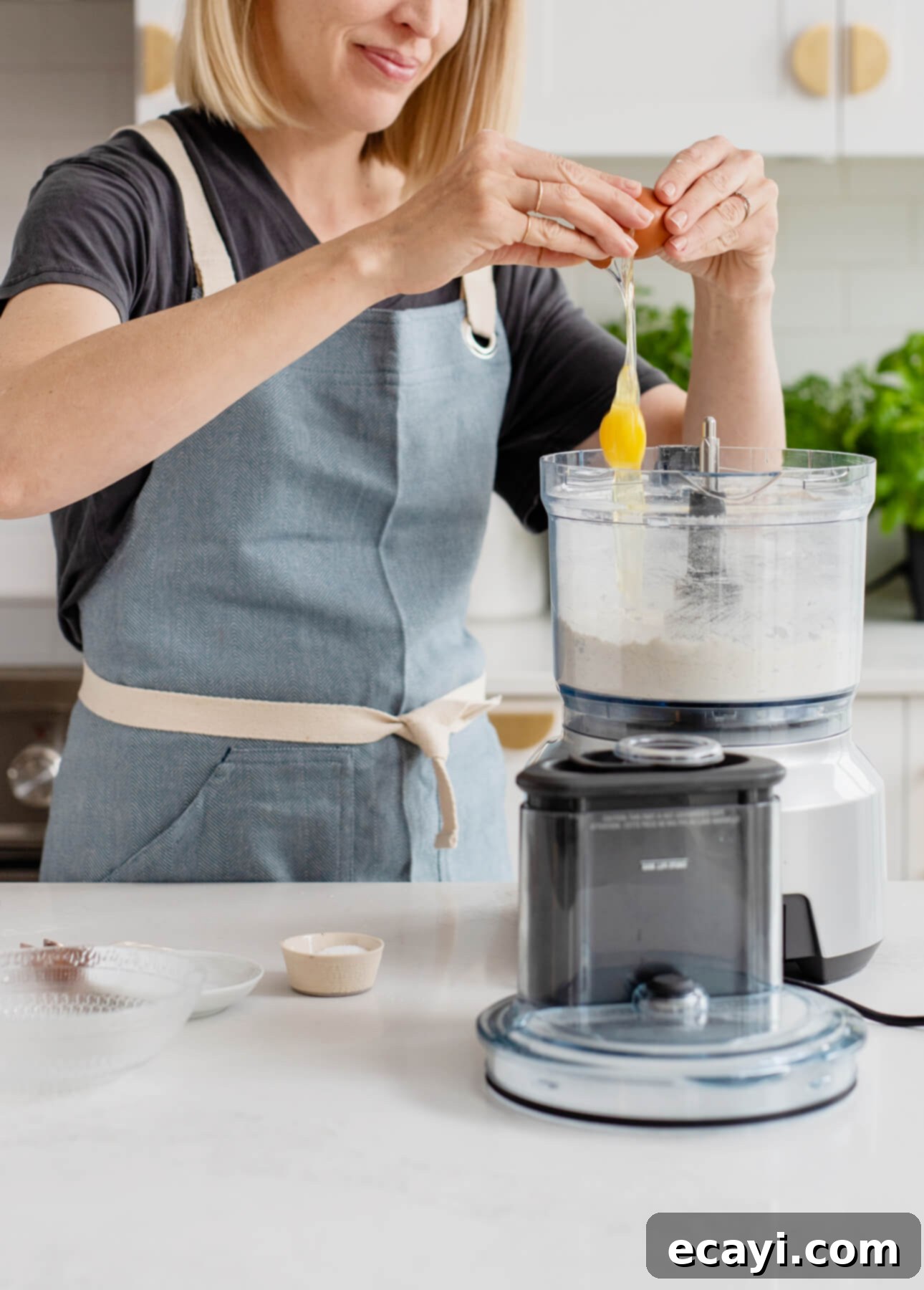
Beyond its speed and ease, learning to make shortcrust pastry in the food processor offers another significant advantage: it’s an excellent way to familiarize yourself with the authentic appearance and optimal texture of “proper” pastry. Traditional hand-mixing methods introduce numerous variables: the temperature of your hands, the warmth of your work surface, and even the specific tools you use can all influence the outcome. Because a food processor standardizes these variables, producing reliably consistent results, you’ll consistently observe and feel the pastry exactly as it should be. With this foundational understanding and consistent success, you’ll eventually feel confident enough to return to the hand-mixing method if you wish, savoring the meditative and satisfying experience of crafting something truly from scratch.
My versatile shortcrust pastry recipe is thoughtfully designed to include options for creating wholesome whole-wheat crusts, which are wonderfully suited for robust savory galettes and hearty quiches, as well as delicate sweet crusts, perfect for all your dessert needs. This recipe has served as my unwavering go-to crust for many years now, consistently delivering perfect results without fail. If you’ve previously hesitated to make pie crusts from scratch, or if you’ve found existing recipes unsatisfying, I sincerely hope you’ll give my foolproof shortcrust pastry a try. I am confident that it will not only boost your confidence in your pie-making endeavors but also leave you genuinely delighted with the delicious outcomes!
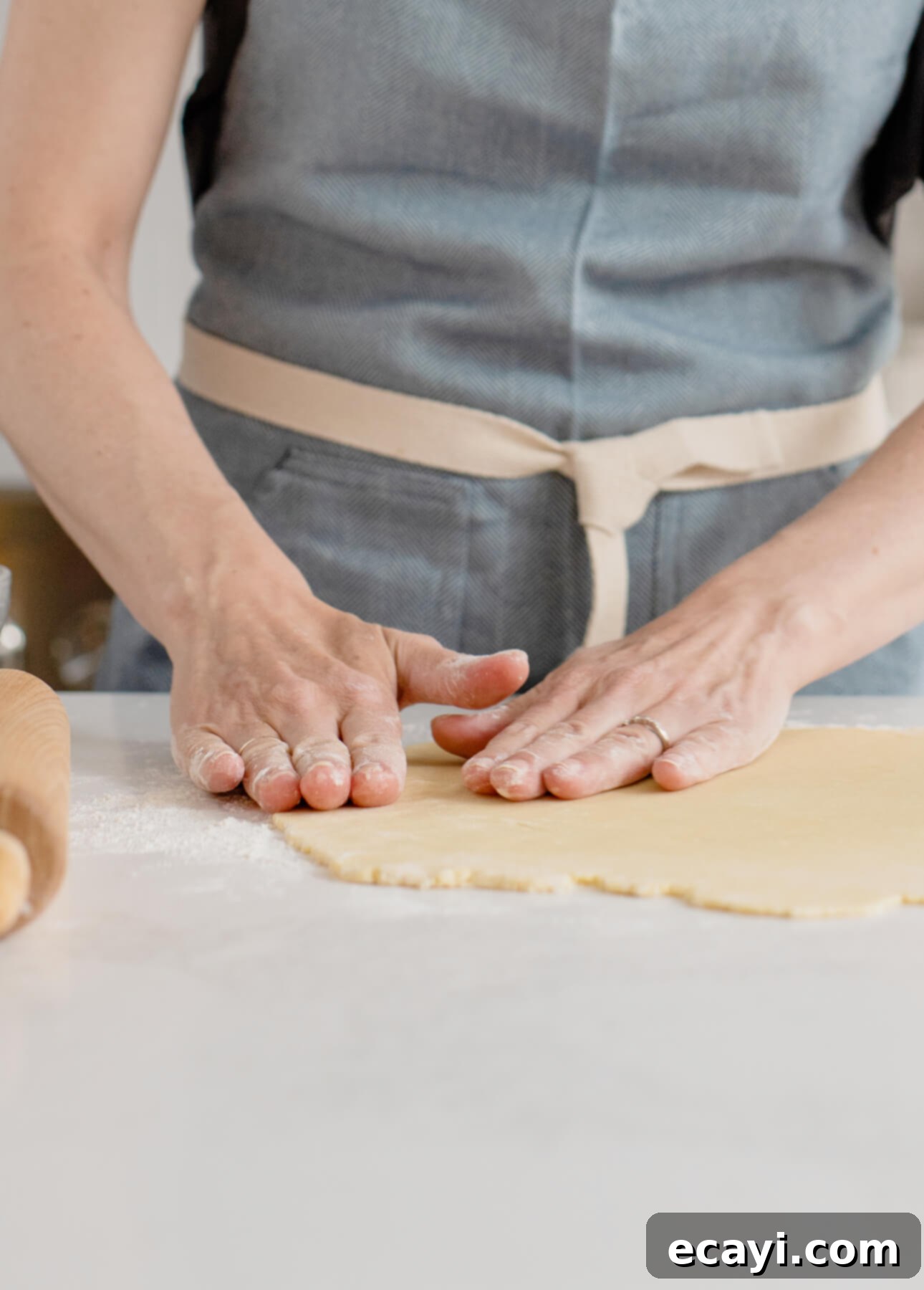
Essential Tips for Crafting the Perfect Shortcrust Pastry
Achieving truly magnificent shortcrust pastry goes beyond just the recipe; it involves understanding and applying a few critical techniques. These tips will ensure your pastry is consistently flaky, tender, and a joy to work with.
Recipe Video: Foolproof Shortcrust Pastry (Food Processor Method)
Witness firsthand how incredibly simple and quick it is to create professional-quality shortcrust pastry using your food processor! This video demonstrates each precise step.
The Golden Rule: Keep Butter and Water Ice Cold
This single tip is absolutely paramount for success: The butter and water you incorporate into this recipe must be intensely cold—not merely chilled from the fridge, but truly *ice cold*. There’s a scientific reason behind this: ice-cold butter distributes more effectively throughout the flour, creating tiny pockets of fat. When these pockets melt during baking, they release steam, which is what separates the layers of dough, resulting in that coveted tender, flaky texture. Furthermore, using ice-cold water allows the dough to come together without prematurely melting the butter or overdeveloping the gluten, both of which are crucial for achieving a light, delicate pastry. Warm butter and water lead to a tough, dense crust.
- To prepare ice-cold water: Simply pour a measured amount of water into a small bowl, then generously fill it with ice cubes. Allow it to sit for a minute or two; the water will be sufficiently chilled for use.
- To ensure your butter is ice-cold: Cut the necessary amount of butter into small, even cubes. Spread these cubes in a single layer over a small plate or baking sheet, then place it in the freezer for precisely 20 minutes. This quick chill ensures optimal temperature without solidifying the butter completely.
The Ultimate Time Saver: Shortcut Your Way to Shortcrust with Pre-Cubed Butter
For those who frequently make pies and tarts, or simply want to streamline their baking process, this shortcut is invaluable. Develop a habit of storing pre-cubed portions of butter in airtight containers in your freezer. This way, whenever the inspiration strikes to make a pie crust, you won’t need to wait the initial 20 minutes for your butter to chill. Instead, simply retrieve a container of these perfectly frozen butter cubes and add them directly to your food processor. I personally find this method far superior to freezing pre-made shortcrust pastry. Mixing a fresh batch of dough using frozen butter is significantly quicker and more convenient than remembering to thaw frozen pastry overnight and then waiting for it to reach the ideal room temperature for rolling.
Precision is Power: Be Accurate with Your Timing
This foolproof shortcrust recipe lives up to its name, but only when you adhere to the specified timings with precision. You are quite literally mere seconds away from either undermixing or overmixing the dough, both of which can compromise the final texture. Therefore, it is imperative to keep your eyes on the food processor and the clock throughout the entire shortcrust pastry-making process. If necessary, use a traditional watch or the stopwatch function on your phone to accurately time each step. This meticulous attention to detail ensures the perfect consistency every single time.
The Revolutionary Rolling Technique: Roll It Out Now, Not Later
If you’ve ever experienced the sheer frustration of pie pastry cracking mercilessly as you attempt to roll it out, rest assured, I completely empathize. Traditionally, freshly made shortcrust pastry requires a resting period in the refrigerator (at least one hour) before baking. This not only extends the overall dough-making process but also necessitates letting the dough return to a more pliable room temperature (approximately 30 to 45 minutes) before you can even begin rolling it. This waiting game can be a significant deterrent for many home bakers.
Here’s a groundbreaking tip to fast-forward your way to homemade pie crust perfection: Roll the dough out *before* you refrigerate it. I discovered this transformative technique from the brilliant Parisian cookbook writer Clotilde Dusoulier, and it has revolutionized my baking. When shortcrust pastry is freshly prepared—that is, immediately after it comes out of the food processor—it possesses an extraordinary suppleness, reminiscent of brand new Play-Doh. This incredible malleability makes rolling it out not only remarkably easy but genuinely enjoyable!
After removing the shortcrust pastry mixture from the food processor, gently gather it into a cohesive ball, then slightly flatten it into a disk. Lightly dust your clean working surface and your rolling pin with a minimal amount of flour. Proceed to roll out the dough to your desired shape and size, whether it’s a perfect circle for a pie or a more rustic shape for a galette. Carefully ease the rolled dough into the pie or tart pan you intend to use, allowing any excess to overhang, or simply spread it flat onto a baking sheet. Refrigerate the shaped or rolled dough for at least 30 minutes (or up to an hour). Before you plan to trim, fill, or further shape the dough, remember to bring it back to room temperature for about 10 minutes; this brief warm-up will make it even more pliable and prevent cracking.
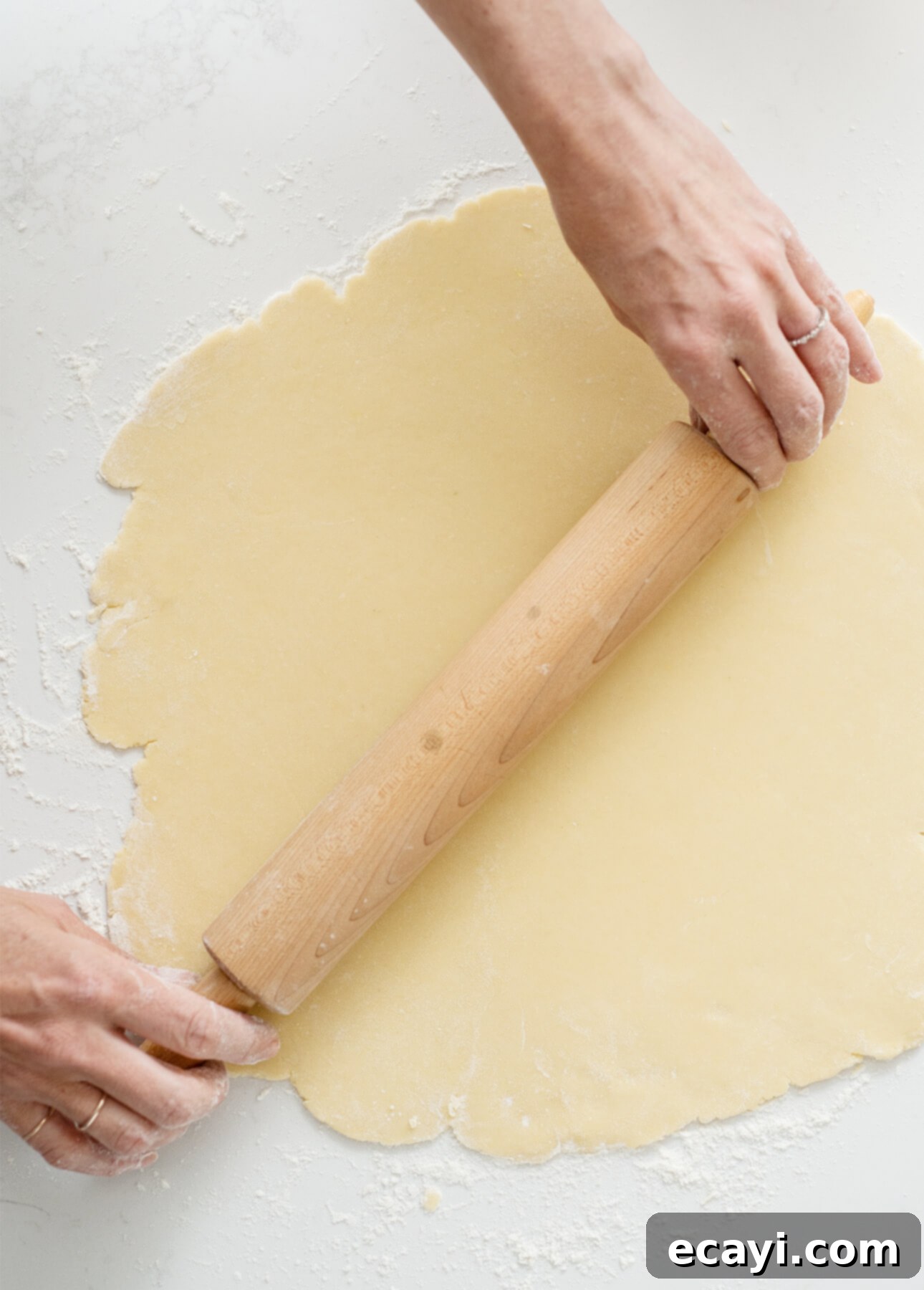
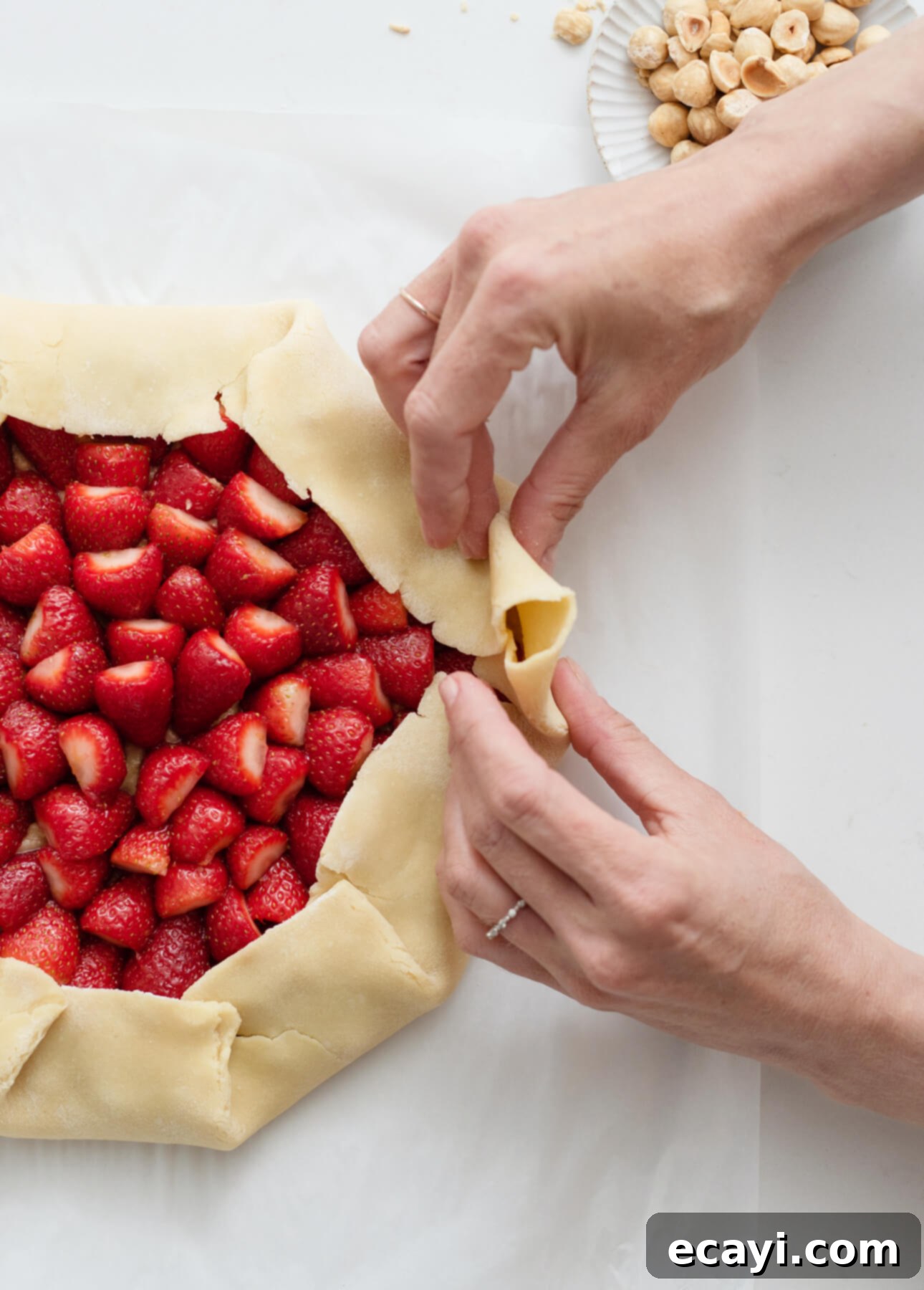
Delicious Recipes Using My Foolproof Shortcrust Pastry
The possibilities are truly endless when you have a reliable, foolproof shortcrust pastry recipe at your fingertips! From elegant sweet tarts to hearty savory pies and rustic galettes, this dough opens up a world of culinary creativity. If you’re seeking inspiration to get started, I’ve curated a selection of my favorite recipes right here, and you’ll discover even more delightful ideas through the provided link.
Classic Quiche Lorraine
Experience the timeless appeal of this beloved French savory tart, featuring a rich, creamy custard and smoky bacon nestled in a perfectly flaky crust.
Heirloom Tomato Crostata with Homemade Pesto
Celebrate summer flavors with this stunning, free-form tart showcasing vibrant heirloom tomatoes and aromatic homemade pesto on a crisp, buttery crust.
Hazelnut and Strawberry Galette
A simple yet elegant dessert, this galette combines sweet strawberries and nutty hazelnuts within a rustic, free-form crust – perfect for showcasing seasonal fruits.
Classic French Lemon Tart (Tarte au Citron)
Indulge in the bright, zesty flavors of this iconic French dessert, featuring a smooth, tangy lemon filling encased in a delicate shortcrust shell.
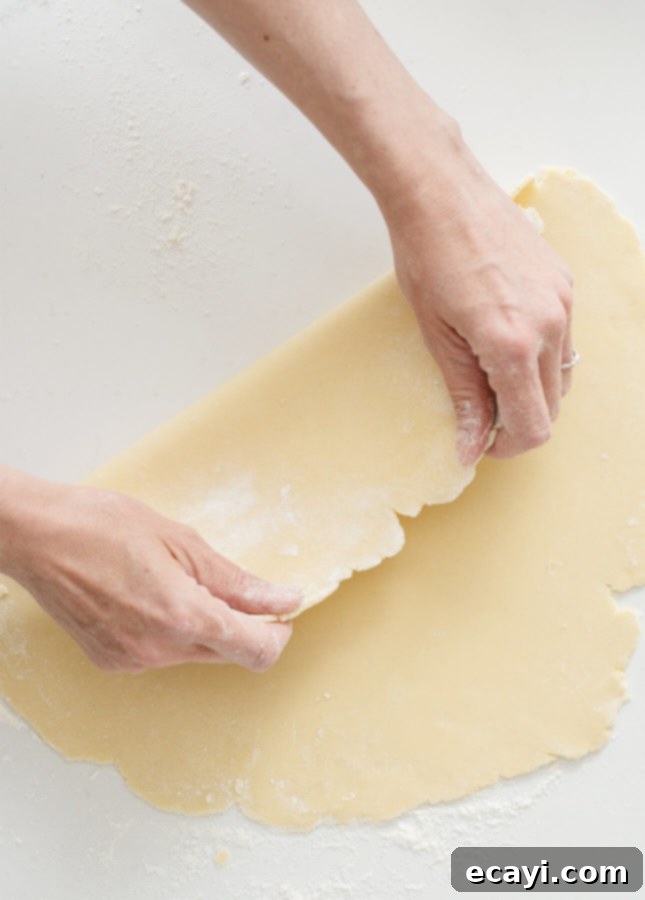
Pin Recipe
Foolproof Shortcrust Pastry (Food Processor Method)
Ingredients
- ½ cup cold unsalted butter, cubed and frozen for 20 minutes
- 1 ½ cups all-purpose flour
- ¼ tsp kosher salt or fine sea salt
- 1 large egg
- 2 tbsp ice water
Instructions
-
Begin by preparing your cold ingredients: Cut the unsalted butter into small, even cubes and arrange them in a single layer on a small plate. Place the plate in the freezer for exactly 20 minutes to ensure the butter is ice cold. While the butter chills, prepare your ice water by pouring 2 tablespoons of water into a small bowl and adding an ice cube or two.
-
In the bowl of a food processor fitted with a steel blade, combine the all-purpose flour and salt. Pulse a few times to ensure they are well combined. Add the chilled, cubed butter to the flour mixture. Process continuously for exactly 10 seconds, until the mixture has a uniform texture resembling coarse breadcrumbs. Avoid overmixing at this stage.
-
Crack the large egg into the food processor and process for precisely 5 seconds. Next, add the ice water (ensure it’s truly ice cold) and process for another 20 seconds. At this point, the dough should begin to clump together and form a cohesive mass. If it seems too dry, you can add an additional ½ to 1 teaspoon of ice water, pulsing briefly, but often the dough simply needs to be gathered. Turn the mixture out onto a clean work surface. Gently press the mixture together with your hands; it should easily hold its shape. Form the dough into a ball, then flatten it into a thick disk, kneading as lightly as possible – just enough to bring it together.
-
If you plan to use the shortcrust pastry immediately: As soon as the dough is formed into a disk, lightly flour your work surface and rolling pin. Roll the dough out to the desired thickness and size for your pie, tart, or galette. Carefully transfer the rolled dough into your pie or tart pan, allowing any excess to overhang, or lay it flat on a baking sheet. Refrigerate the shaped dough for a minimum of 30 minutes (up to an hour) to allow it to rest and firm up before proceeding with your recipe (e.g., blind baking, filling).
-
Alternatively, to store for later use: Wrap the disk of shortcrust pastry tightly in plastic wrap. It can be refrigerated for up to 3 days or frozen for up to 1 month.
-
When using refrigerated dough: Remove it from the fridge and allow it to come back to room temperature for at least 30 minutes before attempting to roll it out. For frozen shortcrust pastry: Thaw it overnight in the refrigerator, then bring it to room temperature for at least 30 minutes before rolling. This ensures pliability and prevents cracking.
VARIATIONS for Your Shortcrust Pastry
-
Whole-wheat shortcrust pastry: For a nuttier flavor and heartier texture, perfect for savory dishes like quiches and pot pies, substitute a portion of the all-purpose flour. Instead of the full amount of all-purpose flour specified in the recipe above, use 1 cup (125 g) all-purpose flour and ½ cup (65 g) whole wheat flour. Follow all other instructions as written.
-
Sweet shortcrust pastry for desserts (Pâte Sucrée): To create a subtly sweet and tender crust ideal for fruit tarts, custards, and dessert pies, simply add 1 tablespoon (12 g / 15 ml) of granulated sugar to the flour mixture along with the salt. Proceed with the recipe as usual.
Video Tutorial
Did you make this?
Tell me how you liked it! Leave a comment or take a picture and tag it with @foodnouveau on Instagram.
Disclosure Notice: This site is a participant in the Amazon Associates Program, an affiliate advertising program designed to provide a means for the site to earn fees by linking to Amazon and affiliated sites.
If you click on an affiliate link, I may earn advertising or referral fees if you make a purchase through such links, at no extra cost to you. This helps me creating new content for the blog–so thank you! Learn more about advertising on this site by reading my Disclosure Policy.
